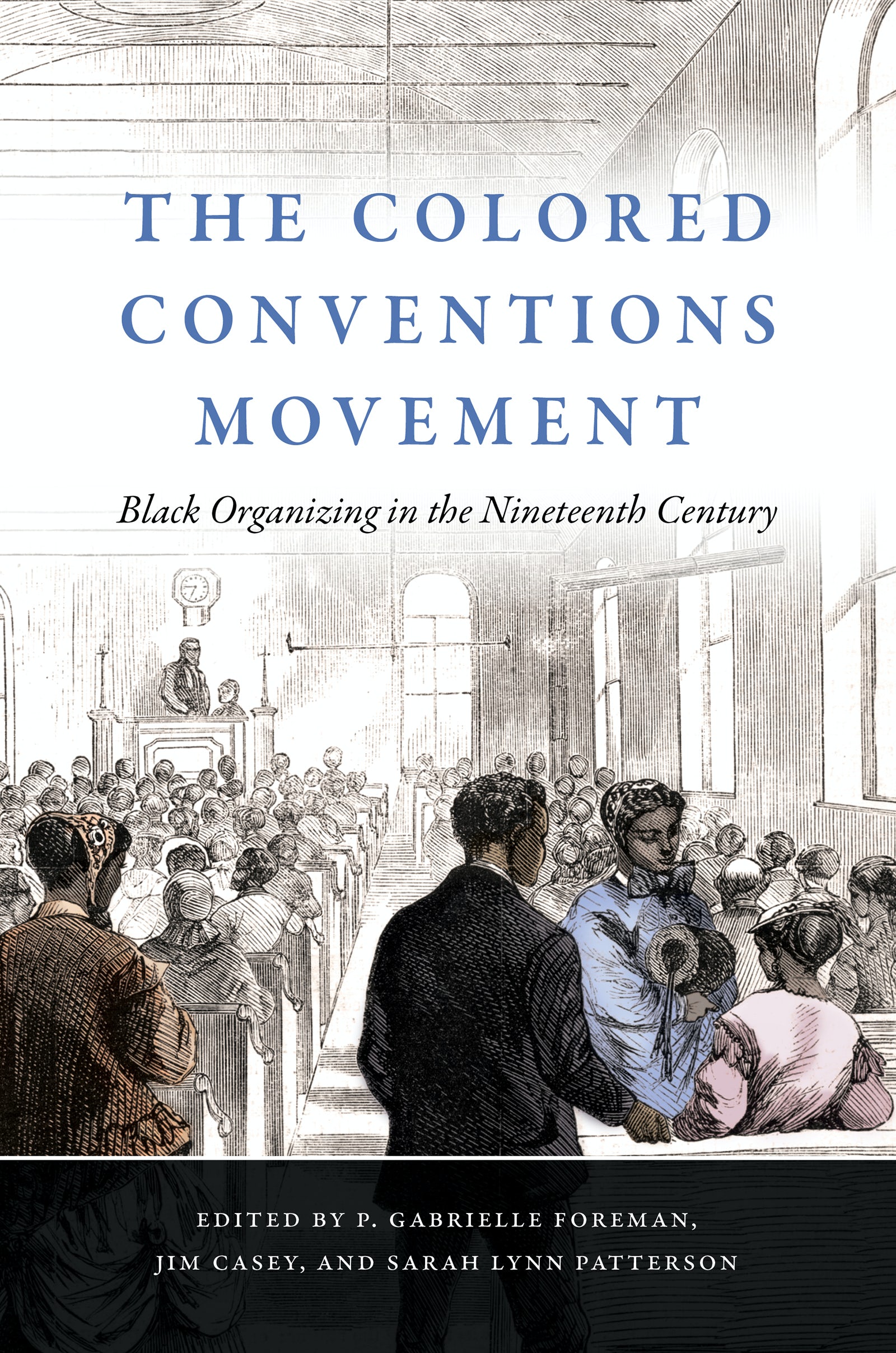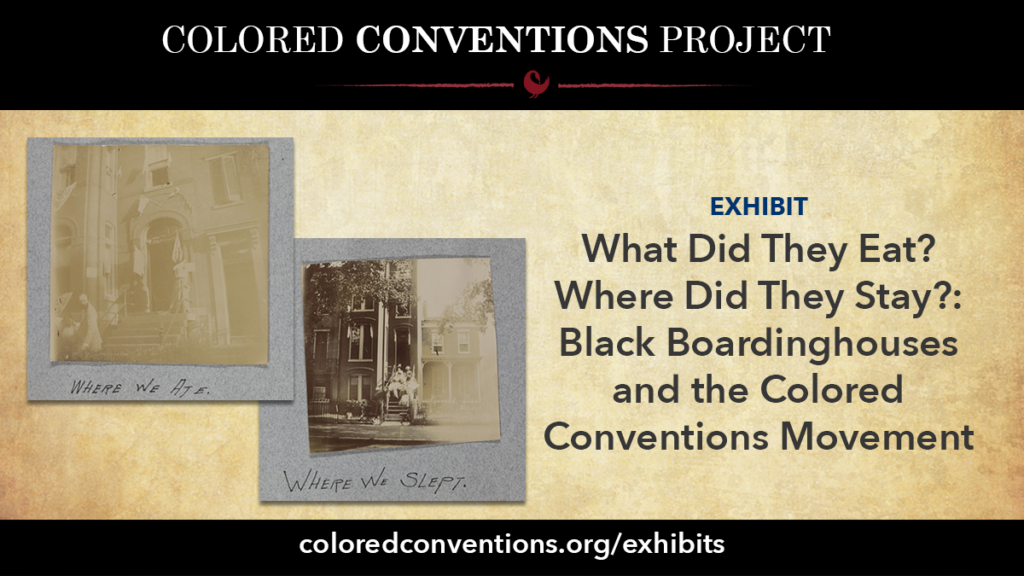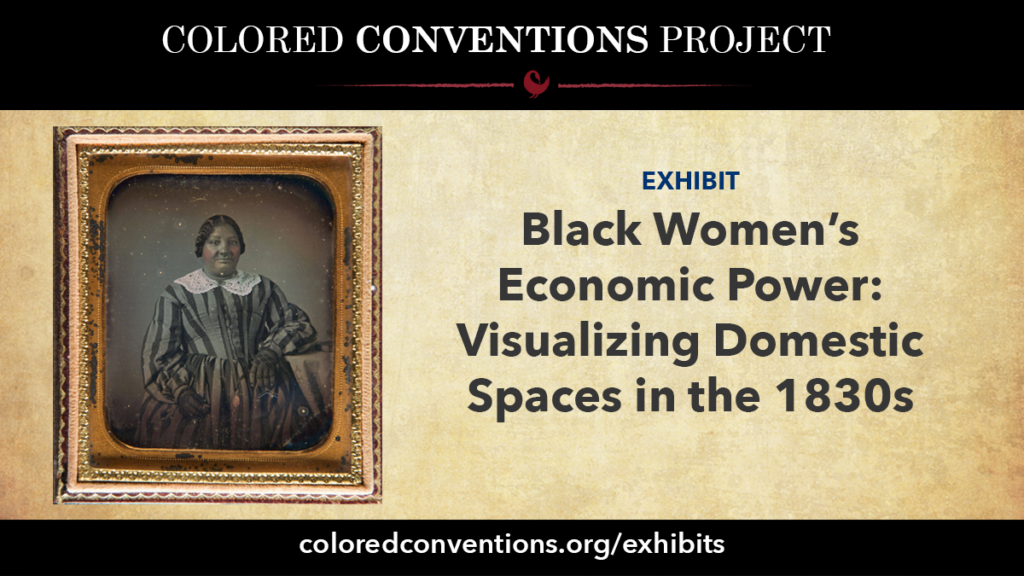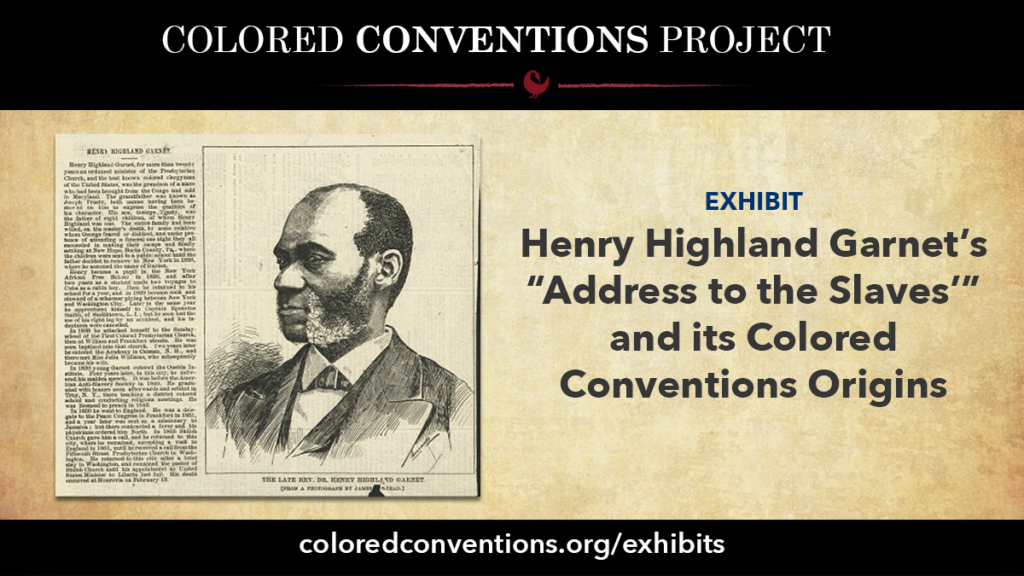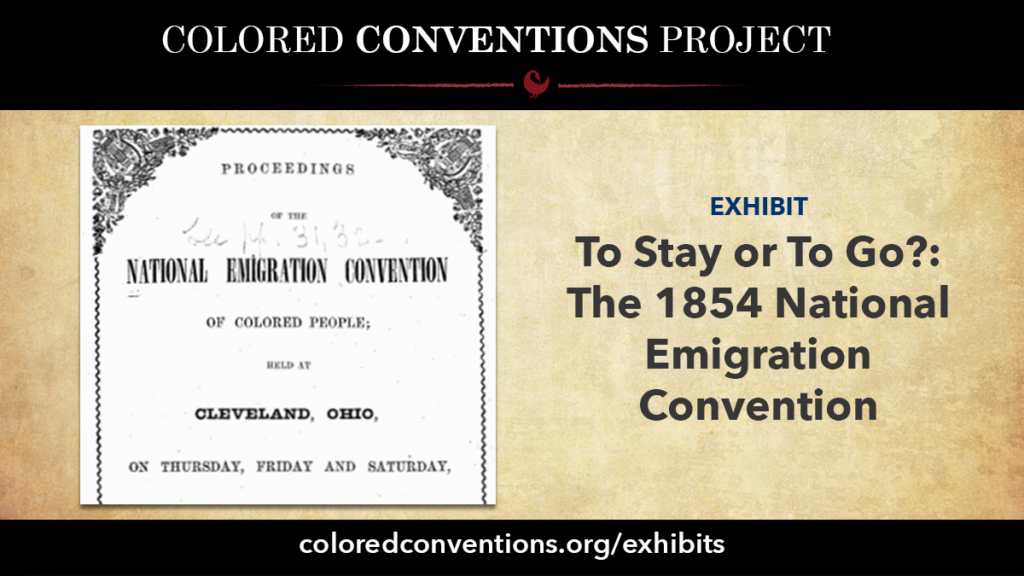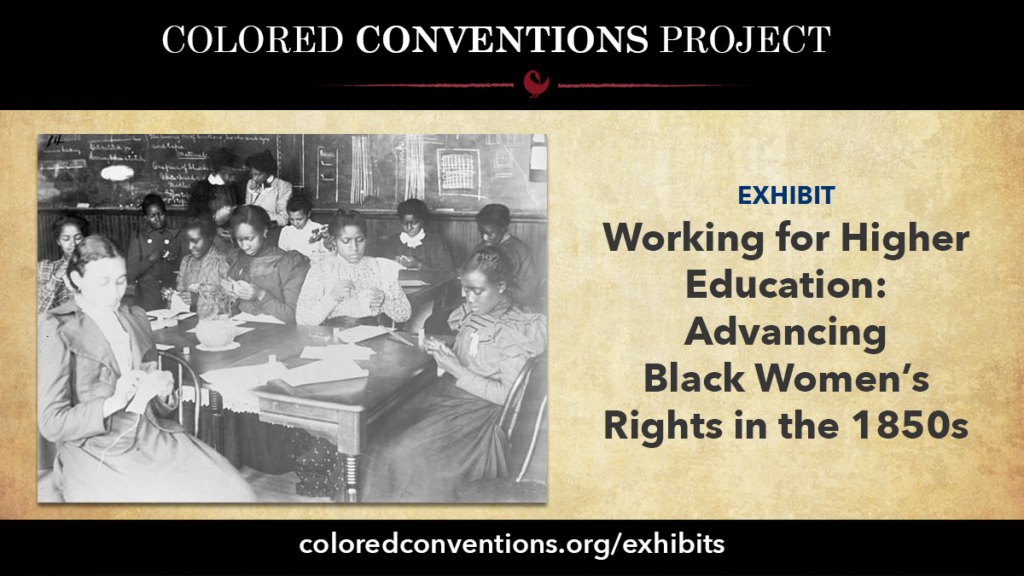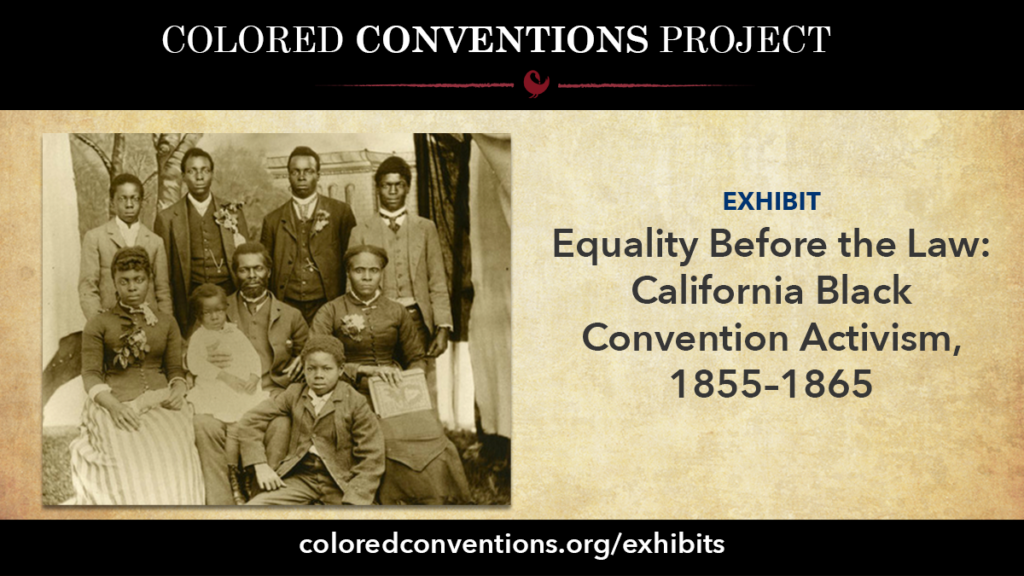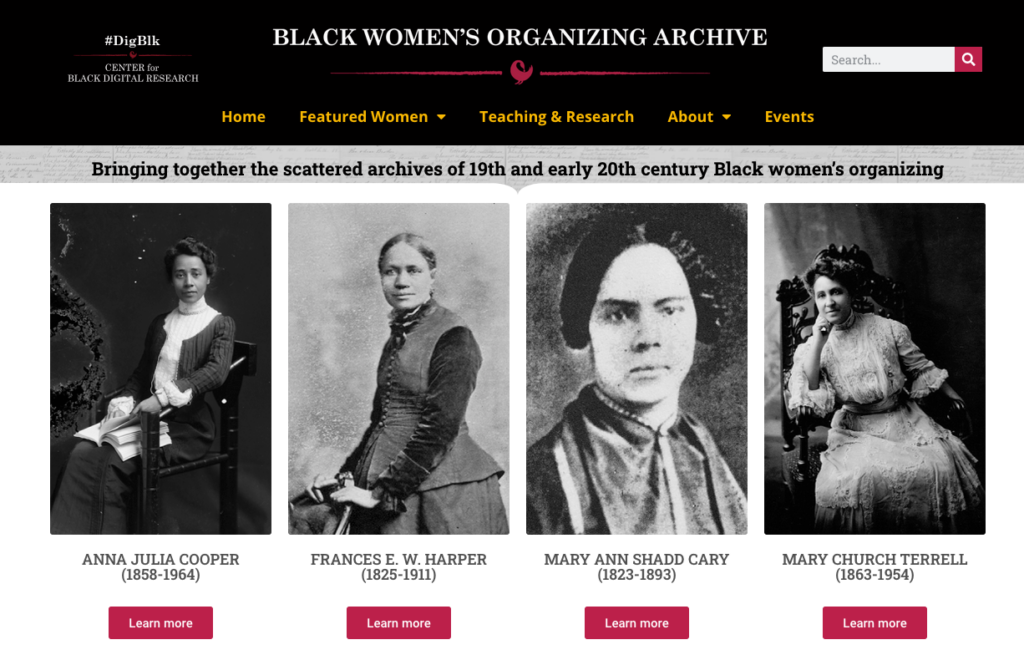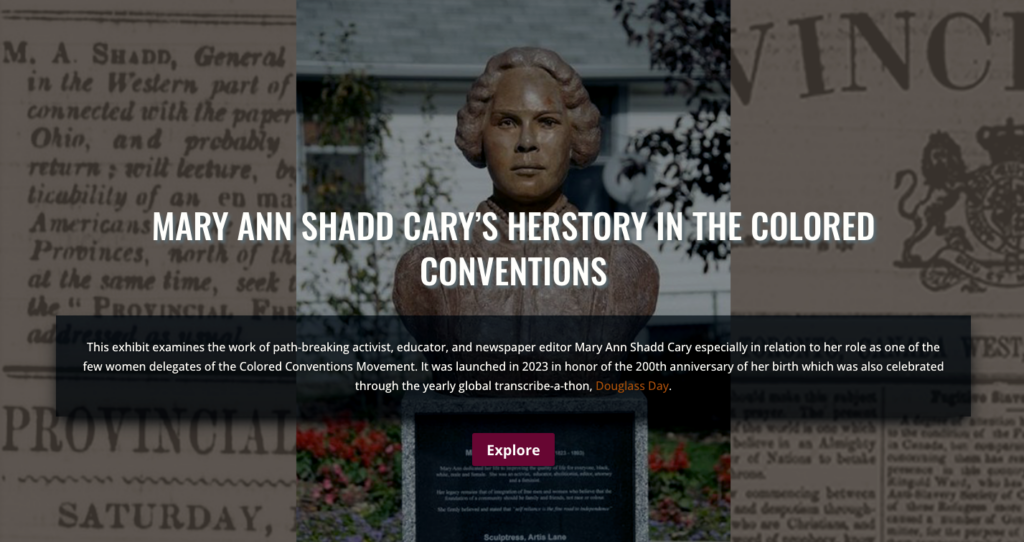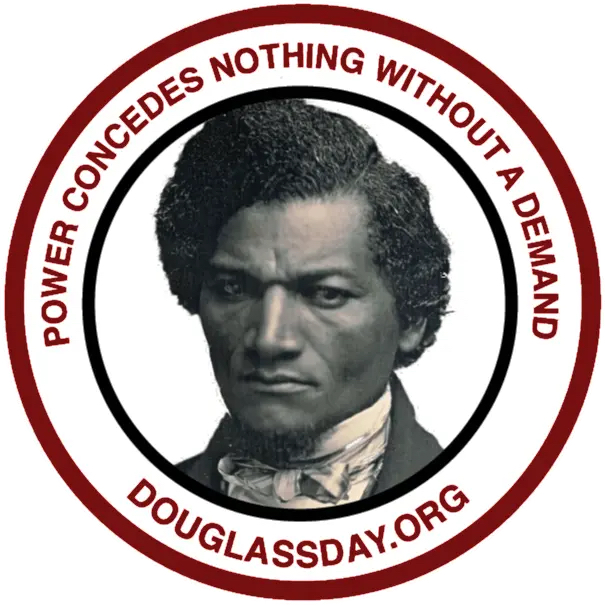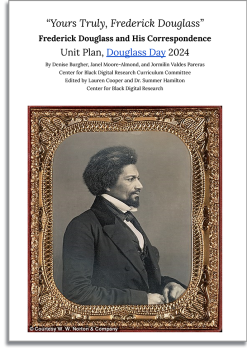The Center for Black Digital Research (CBDR) Curriculum Committee is deeply invested in the belief that children and young adults learn best when instruction is immersed in a sociocultural context. The fundamental importance of African American culture and history in pedagogy is the driving force of the CBDR Curriculum Committee. To this end, our goal is to create opportunities for learning that centers African American history, in particular the history over seven decades of Black organizing of the Colored Convention Movement. This approach allows the Committee to create and design curriculum for the CBDR that fosters an interactive relationship between educators, learners, and communities within and outside technology-mediated spaces that is rooted in Black people’s long struggle for human, civil, educational, labor and economic rights.
This page gathers the teaching guides created across our projects by our Curriculum Committee and highlight digital exhibits, books, and classroom activities to engage students with 19th century Black organizing history.
Teaching Resources on:
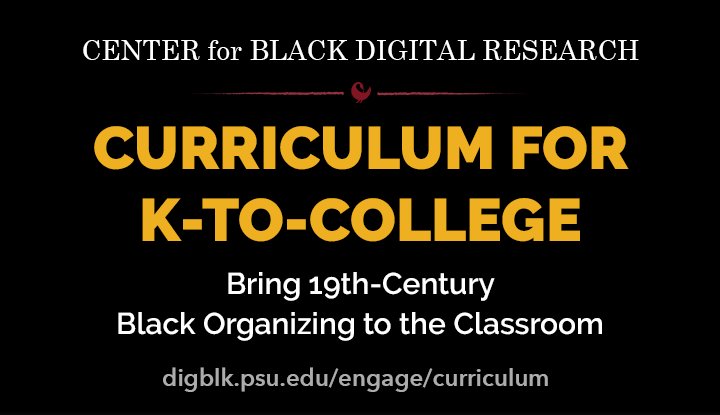
ABOUT US
The Center for Black Digital Research (CBDR) brings the buried and scattered histories of 19th-century Black organizing to digital life through the Colored Conventions Project, Douglass Day, and the early Black Women’s Organizing Archive. Learn more.
Colored Conventions Movement
The Colored Conventions Movement: Black Organizing in the Nineteenth Century (UNC Press, 2021, edited by P. Gabrielle Foreman, Jim Casey, and Sarah Lynn Paterson) is the first volume of essays to focus on the Colored Conventions movement, the nineteenth century’s longest campaign for Black civil rights.
In spring 2021, the Curriculum Committee released 16 teaching guides that can be taught in conjunction with the volume and connects to eight digital exhibits. Teaching Guides are available for K-12 and College/AP Classes.
CHAPTER: “Where Did They Eat? Where Did They Stay? Interpreting Material Culture of Black Women’s Domesticity in the Context of the Colored Conventions” by Psyche Williams-Forson
EXHIBIT: What Did They Eat? Where Did They Stay?: Black Boardinghouses and the Colored Conventions Movement
CHAPTER: “Where Did They Eat? Where Did They Stay? Interpreting Material Culture of Black Women’s Domesticity in the Context of the Colored Conventions” by Psyche Williams-Forson
EXHIBIT: Black Women’s Economic Power: Visualizing Domestic Spaces in the 1830s
CHAPTER: “Flights of Fancy: Black Print, Collaboration, and Performances in ‘An Address to the Slaves of the United States of America (Rejected by the National Convention, 1843)’” by Derrick R. Spires
EXHIBIT: Henry Highland Garnet’s “Address to the Slaves’” and its Colored Conventions Origins
CHAPTER: “The Organ of the Whole: Colored Conventions, the Black Press, and the Question of National Authority” by Benjamin Fagan
EXHIBIT: To Stay or To Go?: The 1854 National Emigration Convention
CHAPTER: “As the True Guardians of Our Interests: The Ethos of Black Leadership and Demography at Antebellum Colored Conventions” by Sarah Lynn Patterson
EXHIBIT: Prosperity and Politics: Taking Stock of Black Wealth and the 1843 National Colored Convention
CHAPTER: “Gender Politics and the Manual Labor College Initiative at National Colored Conventions in Antebellum America” by Kabria Baumgartner
EXHIBIT: Working for Higher Education: Advancing Black Women’s Rights in the 1850s
CHAPTER: “Further Silence upon Our Part Would Be an Outrage: Bishop Henry McNeal Turner and the Colored Conventions Movement” by Andre E. Johnson
EXHIBIT: Before Garvey! Henry McNeal Turner and the Fight for Reparations, Emigration and Black Rights
CHAPTER: “None but Colored Testimony against Him: The California Colored Convention of 1855 and the Origins of the First Civil Rights Movement in California” by Jean Pfaelzer
EXHIBIT: Equality Before the Law: California Black Convention Activism, 1855–1865
Black Women Organizers
The Black Women’s Organizing Archive (BWOA) brings together the scattered archives of 19th and early 20th century Black women intellectuals, organizers, and activists. BWOA moves Black women unapologetically to the forefront of recovery and Black digital history projects to highlight Black women’s often lost, erased, or forgotten contributions to our intellectual histories and social movements. Comprised of students, faculty, and librarians based at the Center for Black Digital Research/#DigBlk, at Penn State University, BWOA works in collaborative partnerships with community arts organizations, academic institutions, and repositories throughout the US, Canada and abroad to locate, digitize, transcribe, and share the collections and papers of Black women organizers, activists, and intellectuals.
Anna Julia Cooper

Anna Julia Cooper (1858-1964) was a celebrated educator, civil rights activist, and prolific writer most known for her 1892 Black feminist text, A Voice from the South by a Black Woman of the South. At the age of 66, she became the fourth African American woman to earn her PhD. She spent many years as an educator challenging the Jim Crow educational system in Washington D.C.
CURRICULUM
“This is the School that We Built:
Anna Julia Cooper, Access and Education”
Anna Julia Cooper: Is This Your Grandmother’s Fight? Black Women and the Politics of Respectability and Resistance
BOOK
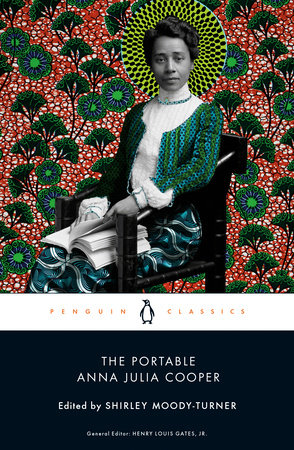
The Portable Anna Julia Cooper
Edited by Shirley Moody-Turner
Series edited by Henry Louis Gates, Jr.
The Portable Anna Julia Cooper brings together, for the first time, Anna Julia Cooper’s major collection of essays, A Voice from the South, along with several previously unpublished poems, plays, journalism and selected correspondences, including over thirty previously unpublished letters between Anna Julia Cooper and W. E. B. Du Bois.
Mary Ann Shadd Cary

Mary Ann Shadd Cary (1823-1893) was an antislavery activist, educator, and lawyer as well as a newspaper publisher, editor, and journalist. She was the first Black woman to publish a newspaper, The Provincial Freeman, when she moved to Canada. Shadd Cary is also known for publishing the pamphlet, A Plea for Emigration; or Notes of Canada West, in Its Moral, Social, and Political Aspect, which encouraged African Americans to emigrate to Canada rather than remain in the United States.
Mary Church Terrell
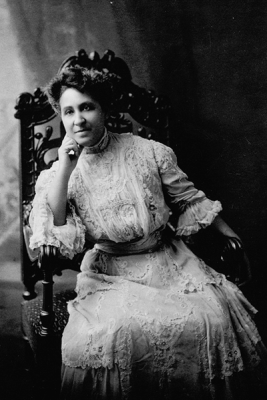
Mary Church Terrell (1863-1954) was a renowned speaker, educator, and civil rights and women’s rights activist. She was the founding president of the National Association of Colored Women (NACW) and a charter member of the National Association for the Advancement of Colored People (NAACP). She also helped found Douglass Day in 1897 to honor Frederick Douglass’s life and legacy on his chosen birthday, February 14.
CURRICULUM
Frances E. W. Harper

Frances E. W. Harper (1825-1911) was an antislavery activist, suffragist, educator, writer, poet, and lecturer. She is most known for her seminal text, Iola Leroy, but she was also a frequent contributor to African American newspapers, where she published many of her poems and short stories. Harper was heavily involved in women’s rights organizations and helped found the National Association of Colored Women (NACW), serving as vice president in its first year.
CURRICULUM
Coming in Fall/Winter 2024
Frederick Douglass Day
Douglass Day is an annual international event that celebrates the chosen birthday of Frederick Douglass every February 14 with a transcribe-a-thon to share and preserve Black records.
Educators are welcome to join us virtually by hosting a transcribe-a-thon with their classes. Transcribing historical documents is a great way for students to engage actively with primary sources. By participating in Douglass Day, students will gain a deeper understanding of Black history. They will also learn about the interpretive choices that archivists and historians have to make when preserving historical documents. The hands-on experiences never fail to spark fascinating classroom discussions.
In conjunction, our Curriculum Team develops and publishes teaching guides to deepen engagement with the figures who’s papers we are transcribing.
DOUGLASS DAY 2024
“Yours Truly, Frederick Douglass”
Frederick Douglass and His Correspondence Unit Plan
By Denise Burgher, Janel Moore-Almond, and Jormillin Valdes Pareras
Center for Black Digital Research Curriculum Committee
Edited by Lauren Cooper and Dr. Summer Hamilton
Center for Black Digital Research
